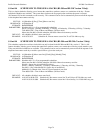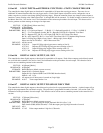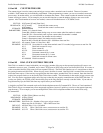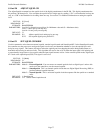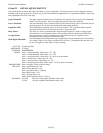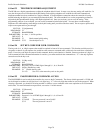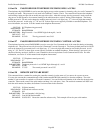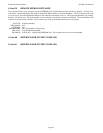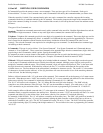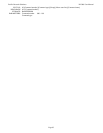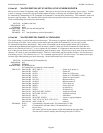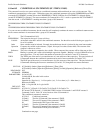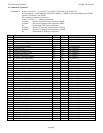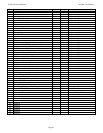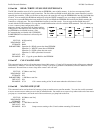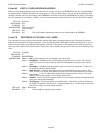
Pacific Research Solutions RI-300e User Manual
Page 82
S-Cmd 62 DEFINING USER COMMANDS
S-Command 62 provides the means to create a user commands. There are four types of User Commands. Each type is
discussed below. To clear a User Command name, send S-Command 62 followed by the command number you want to clear.
When the controller is locked (User command mode) and a user sends a command, the controller compares this incoming
command with the list of commands defined by this S-Command. The controller compares the length of the command and the
digits in the command, looking for a match. If the controller finds a match, it will look up the macro start line and then execute
the macro.
The types of User Commands are:
Standard:
Standard user commands must match exactly with a command in the stored list. Both the digits themselves and the
total number of digits must match. If there are any extra digits in the command, the command will be rejected.
Telephone:
Telephone dial commands provide for extra digits to be appended to the command. These extra digits are used for
the telephone number to be automatically dialed. A standard User Command does not provide for appended digits. The macro
that is created for the telephone off-hook function should always include the off-hook S-Command 82 in order to work
correctly. The on-hook command is not required to be a telephone type user command. Use the Standard user command type
for building on-hook commands.
S-Commands:
This type is used to define a “User System Command”. User System Commands are S-Commands that are
renamed as “User Commands”. These created user commands allow appended digits after the command name, digits which are
passed along to the S-Command to which it points. Specify the number of the
S-Command you want to execute instead of the number of the macro start line as used in the Standard type User Command.
The S-Command value should include one leading zero. Example: S-Command 05 should be entered as “005”.
Wildcard:
Wildcard commands allow extra digits to be included within the command. These extra digits can then be passed
to one or more S-Commands within the macro called by that wildcard command. Multiple groups of digits can be passed to
multiple S-Commands within the macro. The wildcard command’s digits will replace all instances of "Bxx" in the macro with
the digits from the user command. Within the Bxx wildcard, the first “x” is an index and defines the first position of the
wildcard data to use. The first character in the wildcard data is numbered as character zero (0). The second “x” is the number
of characters to be used from the wildcard. A Zero (0) placed here will cause the controller to use all the remaining characters
in the wild card. See the following example:
Define a wildcard command with “14” as the name of the command. This command will set the frequency of a 2-meter remote
base radio. When the user enters “14652” the controller will find “14” as a user command, and define 652 as the wildcard data.
In the macro called by User command 14, include the following S-Command: (91 12 14 B00 #2).
The “91 12” will set the receive frequency. The “14” defines the first two digits in the frequency. The “B00” tells the
controller to use all the characters in the wild card. The “#2” sets the transmitter to simplex. You could create a “14*” and
“14#” command to set plus and minus offsets. The end effect is the same as programming S-Command “91 12 14652 #2”.
In this example, define a wildcard command with “*5” as the name of the command. This command will send a key-down
transmitter time to a controller attached to the auxiliary buss. When the user enters “*5355” the controller will find *5 as a user
command, and define 355 as the wildcard data. In the macro called by User command *5, include the following
S-Command: (A B01 05 B10). The “A” will address a controller on the auxiliary buss. The “B01” will get the first (number 0)
character “3”, and append it to the “A” part of the command, defining the third controller on the auxiliary buss as the one to
which the S-Command is sent, (A3). The “05” S-Command will set the TX on for “x” time. The “B10” will tell the controller
to use all the remaining digits (55) starting with the digit numbered 1. The end effect is the same as programming S-Command
“A3 05 55”



